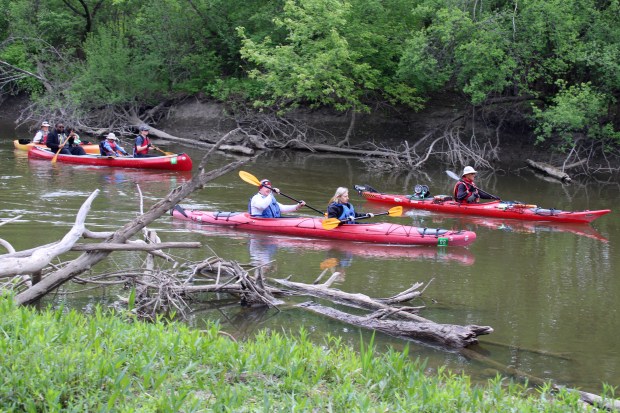The Bozo the Clown I recall most from my youth is the late Bob Bell, who wore the famed red bulb nose when WGN-TV launched their “Bozo’s Circus” broadcast in 1960 and carried on the clowning tradition for 23 years.
By the time I was age 13, in 1984, Joey D’Auria stepped into those blue size 83 AAA shoes and became the new comedy talent to adopt the identity of Bozo until the show franchise ended in August 2001.
This weekend, D’Auria, 70, will make a guest appearance to meet fans from 11 a.m. to 4 p.m. Saturday, July 6, at Crown Antique Mall, 595 East 110th Ave. in Crown Point, to celebrate the antique shop’s fifth anniversary. Fees for autographs, meet and greet photos and signed photos and memorabilia start at $20, with more information available at www.CrownAntiqueMall.net or 219-779-9767. Crown Point artist Tim Wolak has created a special, life-sized, sculpted likeness of Bozo, which will be on display Saturday for photo ops.
After D’Auria ended his run as Bozo at age 49 for WGN in 2001, he and his wife Ginni sold their home north of Chicago in Wilmette and moved to Los Angeles with plans to buy a house in Phoenix to be closer to his parents and in-laws.
Before moving to Chicago to accept his WGN Bozo assignment, D’Auria had lived in Pasadena, California, and already found television notoriety as a favorite returning kooky guest as a contestant on “The Gong Show,” hosted by Chuck Barris. D’Auria performed as alter-ego Dr. Flame-O, who shrieked the notes of popular sounds while holding his outstretched hand over lit-tiered candles on a table.
Johnny Carson invited him to perform his Dr. Flame-o act using the tune “Smoke Gets in Your Eyes” for the Dec. 31, 1982, New Year’s Eve broadcast of “The Tonight Show,” following a sizzling two-song live segment on the same stage from Tina Turner. D’Auria’s comedy and timing attracted the attention of WGN producers who were already scouting for the next Bozo to follow Bell.
Since leaving Chicago and his Bozo duties, D’Auria has primarily worked in voice-over productions, television and commercials. He has rarely discussed his Bozo days, except for the WGN-produced Bozo reunion broadcasts.
Last June, D’Auria publicly explained why he distanced himself from the Bozo character.
“As you may know, for many years I was restricted from making appearances at comic cons and also for promoting my years as WGN-TV’S Bozo the Clown,” D’Auria explained.
“However, thanks to David Arquette, the new owner of the Bozo franchise, I’ve been slowly entering the world…and I’m delighted to announce that I will be returning to the Chicagoland. In addition to autographed photos detailing my work voicing characters in cartoons and video games, I will also be selling a bunch of my Bozo memorabilia, including rare photos of myself with many of my Bozo co-stars. I hope to see you there!”
Actor David Arquette purchased the rights to Bozo in 2021 from Larry Harmon Pictures Corp. And in October 2023, Firefly Brand Management signed with David and wife Christina Arquette and the couple’s Send In The Bozos Corporation to serve as the exclusive North American licensing agency for Bozo the Clown.
I interviewed the late Larry Harmon, owner of the Bozo the Clown character and licensing, a few times before his death at age 83 in 2008. He would carefully describe himself not as the original Bozo the Clown, but as “the real one,” since Harmon portrayed the wing-haired clown for more than a half-century.
The last time I interviewed Harmon was in October 2003, first for a newspaper cover story. Later, he joined me for a radio interview on WLJE Indiana 105 Radio in Valparaiso.
The Bozo character was created in the early 1950s by Alan Livingston, who was the voice for a series of children’s albums for Capitol Records. Livingston always said he never knew why he chose the name Bozo, other than “it sounded like the name of a clown.”
Harmon, who played Bozo on KTLA in Los Angeles, bought the rights to the name “Bozo” from Capitol in the 1950s and franchised the clown program around the country. He hired Willard Scott to play Bozo in 1957 in Washington before he lost the wig and make-up to become the weatherman on NBC’s “Today.” Harmon told me he trained 203 Bozos during more than a half-century at his Bozo University school for clowns.
By the 1960s, every major city across the country had its own “Bozo Show.” WGN’s “The Bozo Show” originally aired as “Bozo’s Circus,” ranked as the longest-running locally produced children’s show in U.S. broadcast history. It was the final broadcasting program of what was once more than 200 Bozo shows aired in cities across North America.
In 1980, ticket requests for the 200-seat WGN studio show taping were backed up for 11 years. The last time ticket requests were accepted was in 1990 when WGN’s telephone lines received more than 27 million calls for ticket requests during five hours.
Philip Potempa is a journalist, published author and the director of marketing at Theatre at the Center. He can be reached at pmpotempa@comhs.org.




